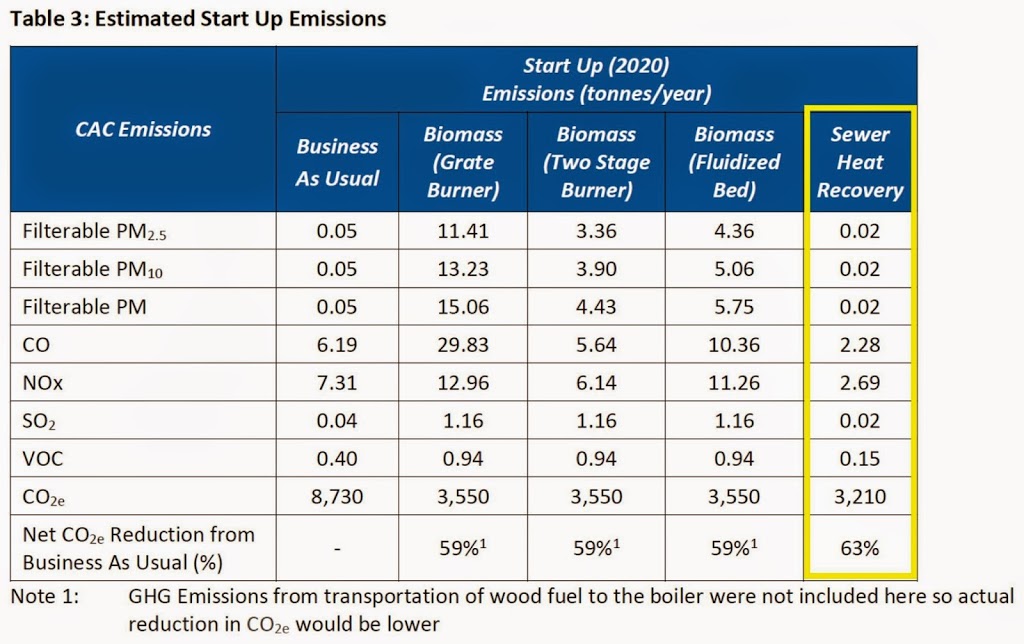I wasn’t able to attend the City’s open house last month on the potential District Energy Utility (DEU) system, tentatively proposed for the Sapperton area (it was the same night as the Royal City Curling Club AGM, and two or three other events I would have like to have attended. I need a clone). I have read a lot about DEUs, and have toured systems in a few different places. I have previously written at length about the many benefits of DEUs, so I was really interested to see what direction New Westminster was planning to go with the idea.
Based on what I read in the consultation materials, I like what I see.
The basic idea behind a DEU is that thermal energy systems can be more efficient if they are built larger. This is why there is commonly a single boiler in a large commercial or residential building, instead of having little boilers in each apartment or office. If a single energy source could supply heat energy (hot water or steam) to multiple buildings, it can be run as a utility to those buildings: a DEU.
Many large cities have had systems like this for decades. Downtown Vancouver has a gas-fired steam system that ties multiple buildings together. However, the modern resurgence of DEUs is coming out of Europe, and is being driven by low- or zero-carbon energy supplies. In the last decade, DEUs of different size and design have popped up in Victoria, Vancouver, Richmond, and other cities.
Although DEUs can be retro-fitted into existing buildings, the most cost-effective application is one where the buildings are constructed with the DEU in mind, around a development hub. Having an institutional or industrial user in the core to provide cost-buffering “baseline demand” makes the business case even stronger. A well-designed DEU will sell energy to the customers at similar rates as other energy sources (while buffering the customers from the volatility of gas or oil prices), pay for the infrastructure costs, and even turn a small profit for the utility owner. When a low- or zero-carbon energy source is part of the plan, there are spin-off environmental benefits for the entire community.
The New Westminster situation has many of the elements that could make for a very successful DEU. There is an institutional customer interested in reducing its carbon footprint for regulatory reasons, and there is relatively high density development (commercial, industrial, and residential) occurring nearby that will allow gradual scaling up for increased efficiency. There also happens to be a zero-carbon energy source right nearby.
The analysis provided by the City here shows that the sewer heat option is viable, at least in the preliminary analysis. This is really good news, because although the wood waste option would provide GHG and cost benefits over not having a DEU, the math when it comes to emissions related to a sewer heat recovery system are obviously order-of-magnitude better:
 |
| Emission estimates of different systems, click to enlarge. |
Yes, scrubbers, filters and the such can improve the baseline particulate numbers, but you really can’t argue with the near-zero emissions of the sewer heat system.
As I said, I missed my chance to go to the open house, but I can still provide my feedback. So can you!
Read the materials here. And more here.
Then provide some feedback here.You can ask questions, let them know your concerns or ideas. Here is your chance to give them the feedback you want. But you better hurry, you have until this Friday!
